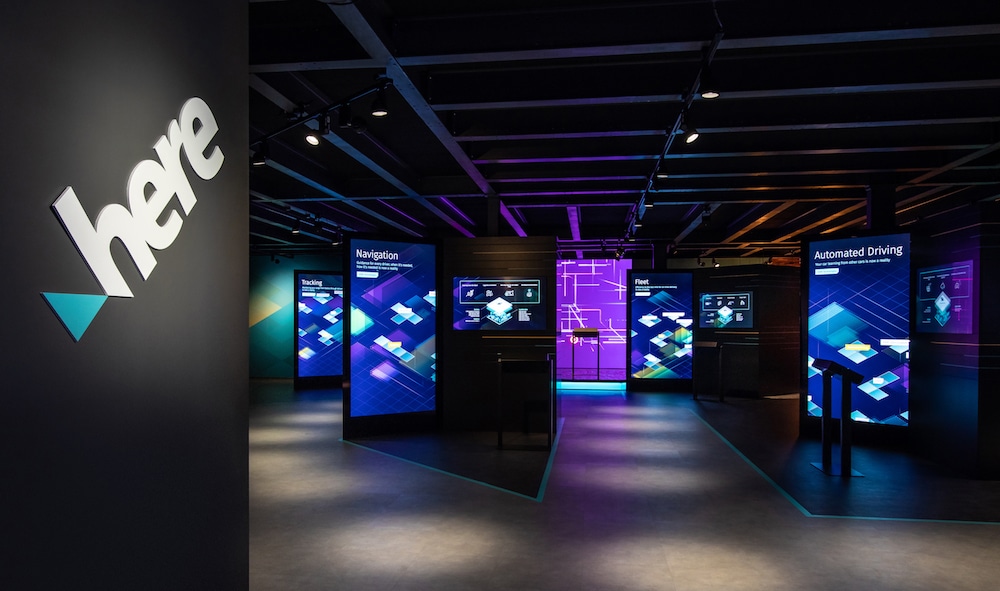CES 2019
Immerse the audience into a space that blurred the distinction between digital and physical to represent the possibilities of a future created with data.
Challenge
For Jack’s third year of collaboration with HERE technologies, we took to the 2019 Consumer Electronics Show (CES) in Las Vegas to create the brand’s annual pavilion exhibit. Part of our challenge was to surpass the high standards set from previous years.
HERE’s solutions involve sophisticated layers of location data and although used by a large audience, most consumers are unaware of the brand and its functions. Location data is also an abstract concept which does not easily translate tangibly into a space. Our objectives were simple:
- Break through the noise at CES 2019 and create an exhibit that stands out amongst some of the most notable electronics brands in the world.
- Build HERE’s brand awareness, ensuring that HERE is a recognizable and sought after exhibit.
- Express the abstract core of HERE’s solutions in a tangible way, through the design and flow of the space.
Insight
The majority of the human population uses HERE’s services but have little to no understanding of the depth of data involved in creating its seamless process. Their technologies are in our cars, our GPS systems and our mobile phones. Yet for people to fully comprehend HERE’s functions, we needed to immerse them in their technologies and solutions.
Idea
Immerse the audience into a space that blurred the distinction between digital and physical to represent the possibilities of a future created with data.
The pavilion was conceptually themed “A Thousand layers” and took the audience on an immersive journey inviting them to “Step into the New Reality”, blending the digital and physical world.
Experience
As guests approached the pavilion, they were greeted with a multi-dimensional screen above glass doors, providing them with a glimpse of the digital reality and inviting them inside. Upon entering, the audience stepped into relatively dark space, lit only by the glow of large digital screens. The purpose of this was to symbolize physical immersion in order to comprehend this overlapped reality.
Walking further, large demos screens unveiled the purpose and functionality of HERE’s core technologies and services.
The constant transitions between digital content and physical screens conveyed the symbiotic convergence of the digital and physical world. Upstairs was a lush oasis, flooded with natural light, green flowing plants and comfortable couches. The space purposefully used natural materials and bright colors. This strategic contrast of materials was created to surprise the audience, spark conversation and symbolize how the digital overlaps the real world. Each meeting room surrounding the space included a large individualized piece of artwork. The names of each room symbolized the city from which data was collected to inspire and develop the visual.
The concept of layers was communicated through the functionality of data in the demos and executed through the depth of the ideas behind the spatial design.
Impact
The pavilion witnessed over 15,000 visitors in total, participating in over 600 hours of demos (a 25% increase from the previous year’s traffic). And over 1.6 million social media impressions were calculated in the five-day span of CES.


We also designed the pavilion to be as sustainable as possible. Over 90% of all materials used to create this exhibit were reused of recycled. Furniture and plants were rented and the construction materials were shipped back to Germany after CES.





